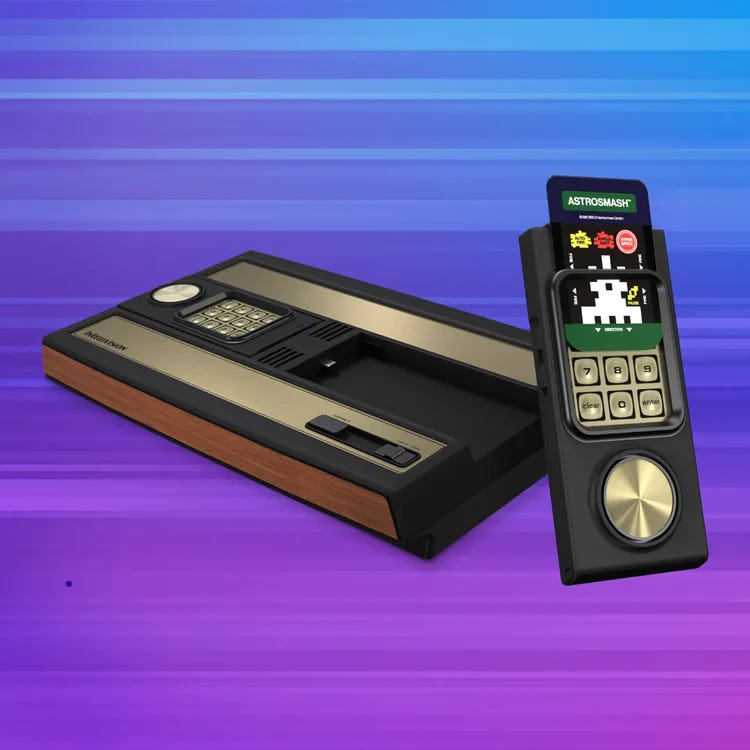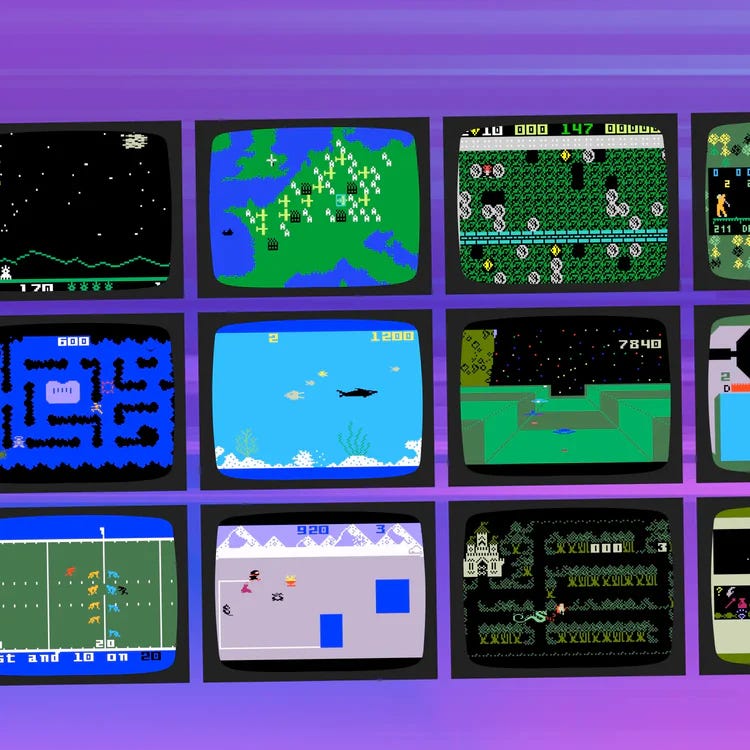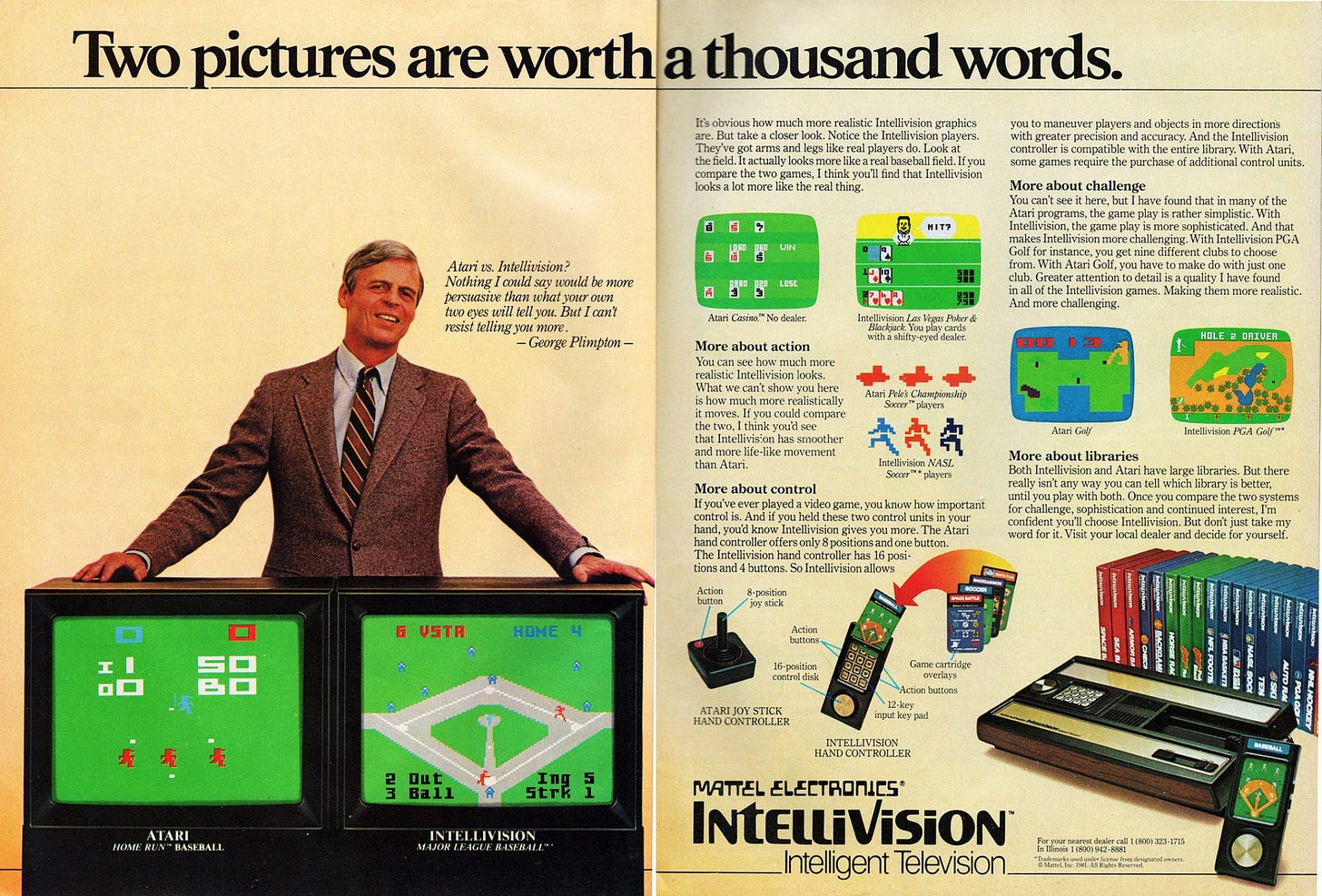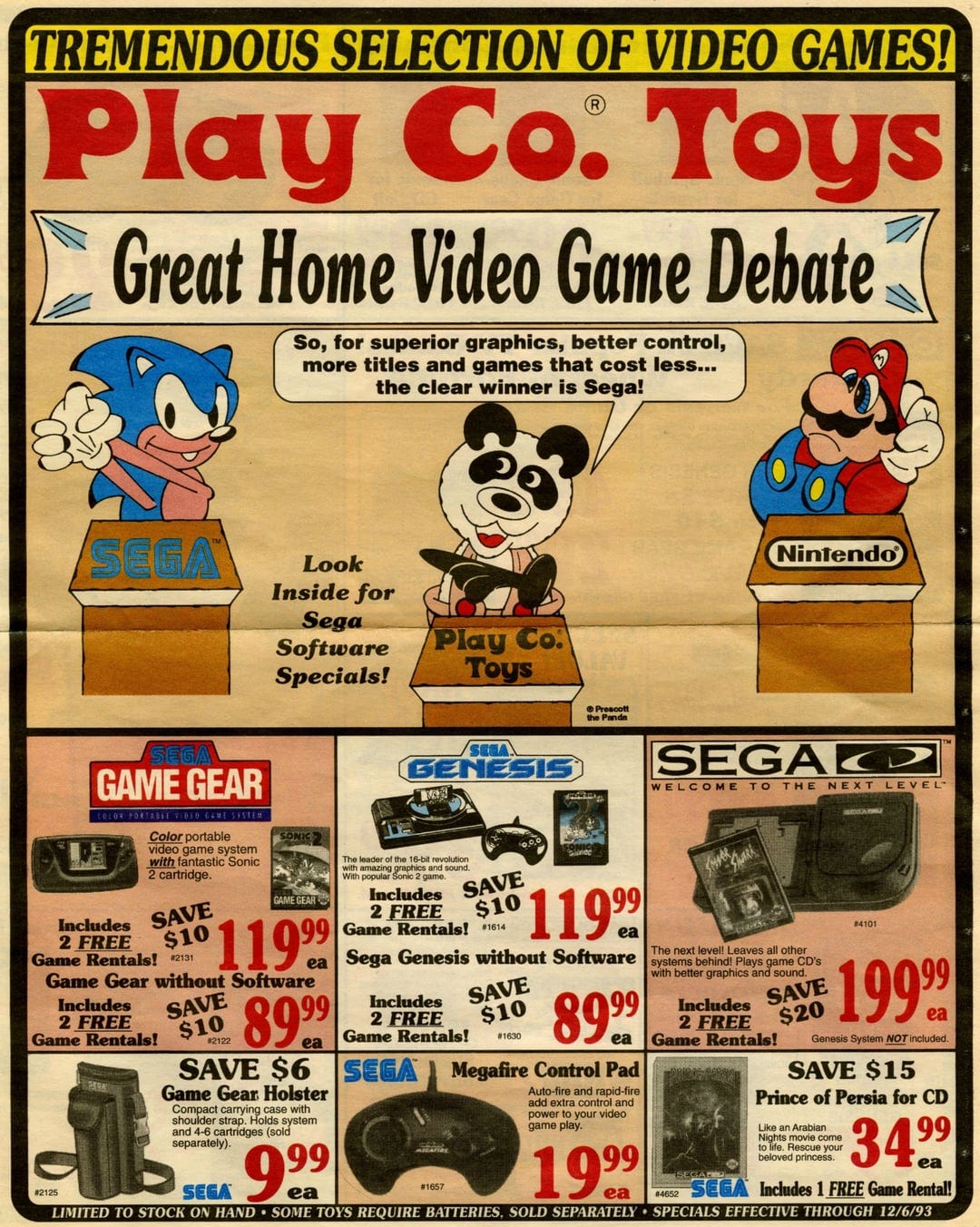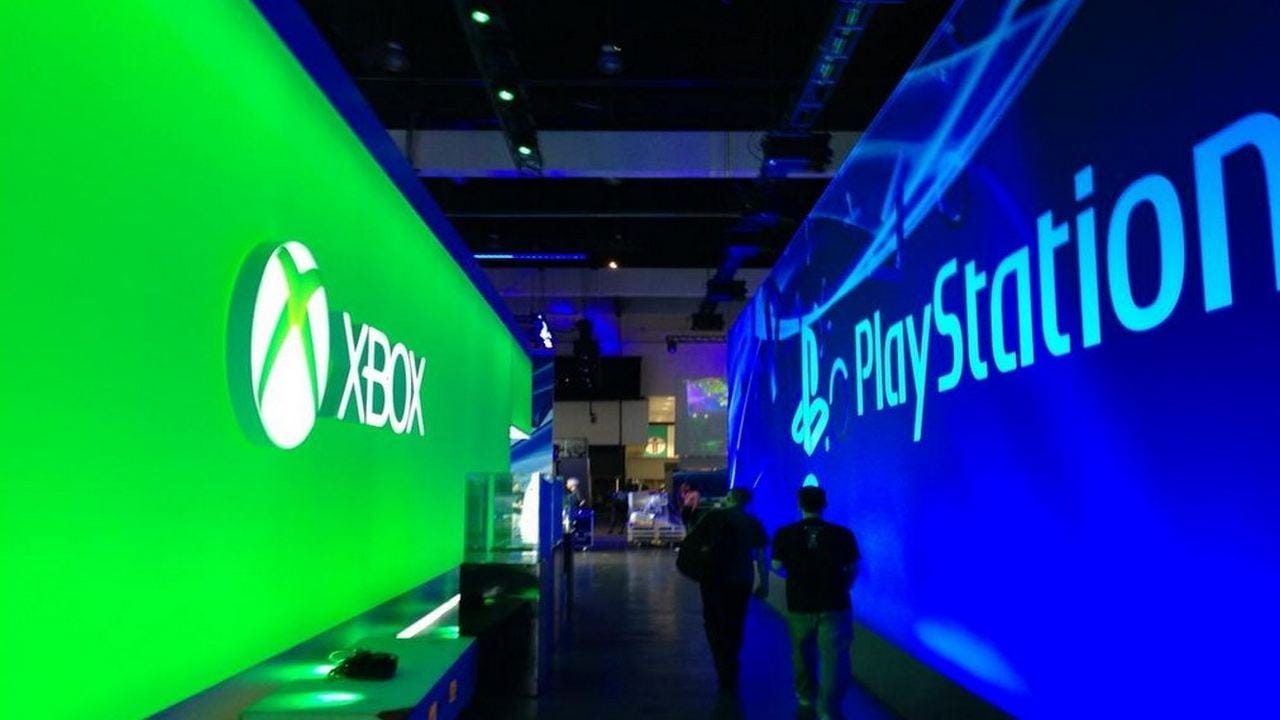Atari is Making a New Intellivision Console. What’s Next? Nintendo Making a New Sega Console?
Atari’s acquisition of the Intellivision brand has led to the announcement of the new Intellivision Sprint console, reviving a piece of 1980s gaming history with modern updates for today’s players. This move not only ends a decades-old rivalry but also sparks comparisons to other famous console battles in gaming lore. Fans of retro gaming are buzzing about what this means for the industry.
Here’s the TL;DR...
Atari bought the Intellivision brand in May 2024, gaining rights to over 200 games and ending a 45-year console war.
The Intellivision Sprint is a $150 mini-console with 45 built-in classics, wireless rechargeable controllers, HDMI and USB-A ports, set for release in early December 2025.
Back in the 1980s, Atari and Intellivision went head-to-head with competing hardware and aggressive ads, much like Nintendo versus Sega in the 1990s.
Modern rivalries, such as Sony’s PlayStation against Microsoft’s Xbox, show how console wars evolve, with recent cross-platform sharing signaling a potential truce.
Atari has been on a retro revival streak with releases like the Atari 2600+ in 2023, Atari 400 Mini in 2024, and Atari 7800+ in 2024, positioning the Sprint as the latest in their nostalgic lineup.
What Exactly Is the Intellivision Sprint and Why Should Retro Fans Care?
The Intellivision Sprint brings back the spirit of the original 1979 console, packing in 45 games like Astrosmash, Shark! Shark!, Boulder Dash, Baseball, and Night Stalker for instant play. It features HDMI connectivity for modern TVs, a USB-A port for loading extra games or connecting original controllers with an adapter, and comes with a USB power adapter and HDMI cable. The package celebrates the 45th anniversary with upgraded graphics support and plug-and-play ease.
Two wireless controllers mimic the classic disc design but recharge by docking directly into the console. Overlays are a standout: 48 double-sided cards map controls for each game, blending old-school tactile feel with new designs. Priced at $149.99, it’s aimed at collectors who want reliable hardware without emulators, and pre-orders earn Atari Club points.
This isn’t just nostalgia—it’s a bridge to forgotten gems like Tower of Doom and Thunder Castle, now accessible without hunting rare cartridges. Retro fans get authentic gameplay with modern perks, making it a must for anyone who remembers the original’s innovative sports sims.
How Did Atari End Up Owning Its Old Rival Intellivision Anyway?
Atari snapped up the Intellivision brand, trademarks, and a library of over 200 titles from Intellivision Entertainment LLC back in May 2024. The deal didn’t include the troubled Amico project, which stays separate. Atari plans to boost digital and physical releases of classic Intellivision games, and maybe even develop fresh ones.
Mike Mika, head of Atari’s Digital Eclipse studio, called it a historic moment: “Uniting Atari and Intellivision after 45 years ends the longest running console war in history.“ Wade Rosen, Atari’s CEO, added that it was a chance to “unite former competitors and bring together fans of Atari, Intellivision and the golden age of gaming.“ The acquisition feels like a full-circle moment for gaming vets.
Remember the 1980s? When Atari and Intellivision Were the Original Console Brawlers
The original Intellivision hit shelves in 1979, gunning straight for Atari’s dominant 2600 with better graphics and sports titles backed by real leagues. Ads starred George Plimpton trash-talking Atari’s simpler visuals, turning living rooms into battlegrounds. Atari sold around 30 million units, dwarfing Intellivision’s 5 million, but the rivalry pushed both to innovate.
By 1982, things heated up with Atari’s 5200 and ColecoVision jumping in. The 1983 crash hit hard, leading Mattel to sell off Intellivision in 1984. Fast-forward to today, and Atari’s Sprint release feels like burying the hatchet—with a shiny new toy as the peace offering.
Nintendo vs. Sega: The 1990s Speed Demons That Echoed Atari’s Old Feud
Nintendo ruled the late 1980s with the NES, but Sega’s Genesis fired back in 1989, boasting 16-bit power and arcade ports like Altered Beast. Slogans like “Genesis does what Nintendon’t” targeted teens, while Sonic the Hedgehog became Sega’s mascot to rival Mario. By 1991, Sega grabbed U.S. market share with price cuts and edgier marketing.
The war peaked in 1993 over Mortal Kombat, where Sega’s uncensored version outsold Nintendo’s tame one, sparking congressional hearings on game violence. Sony’s PlayStation entry in 1995 shifted the landscape, leading Sega to bow out of hardware by 2001. Just like Atari and Intellivision, this rivalry drove better games but ended with one side adapting to survive.
Sony vs. Xbox: Modern Mayhem That’s More Coop Than Combat These Days
Sony’s PlayStation and Microsoft’s Xbox kicked off in 2001, with Xbox pushing PC-like power against PlayStation 2’s massive library. Early gens saw Xbox 360 lead with online features, but PS3 caught up via Blu-ray and exclusives. By the PS4 era, Sony dominated sales at 117 million units to Xbox One’s 52 million, thanks to simpler design and hits like God of War.
Today’s PS5 and Xbox Series X/S battle over services like Game Pass versus Sony’s premium exclusives. Microsoft’s buys of Bethesda and Activision raised eyebrows, but deals kept Call of Duty multi-platform. In a twist, 2025 saw crossovers like Helldivers 2 on Xbox and Gears of War on PS5, suggesting the wars are thawing.
Atari’s Retro Revival: How the Intellivision Sprint Fits Into Their Growing Lineup of Classic Re-Releases
Atari has been steadily bringing back its golden age with modern twists, starting with the Atari 2600+ in 2023, which plays original 2600 and 7800 cartridges via HDMI for $129.99. Next came the Atari 400 Mini in 2024, a pint-sized emulator of their 8-bit computers with 25 built-in games and USB controller ports, priced at $119.99. The Atari 7800+ followed in 2024, offering cartridge compatibility for 7800 and 2600 games, a wireless gamepad, and HDMI output for $129.99.
These releases focus on authenticity with modern conveniences, like save states in the 400 Mini or wireless controls in the 7800+. The Intellivision Sprint slots in perfectly as Atari’s first foray into a rival’s territory, expanding their retro ecosystem beyond their own brands. It shares the mini-console formula but adds unique touches like game-specific overlays, appealing to a broader audience of vintage enthusiasts.
Atari’s strategy seems geared toward collectors, with each device targeting specific eras—1970s for 2600+, 1980s home computers for 400 Mini, and now Intellivision’s strategy-focused library. This lineup not only revives hardware but also fuels new interest in classic games, potentially leading to more cross-brand experiments.
Hat Tips
Atari official product page for Intellivision Sprint: https://atari.com/products/intellivision-sprint
Atari acquisition announcement: https://atari.com/blogs/newsroom/atari-acquires-intellivision-brand
Wikipedia on console wars: https://en.wikipedia.org/wiki/Console_war
Video Games Chronicle article on Atari re-releasing Intellivision: https://www.videogameschronicle.com/news/decades-after-the-first-ever-console-war-atari-is-re-releasing-its-former-rival-intellivisions-console/
Time Extension on Atari revealing the Intellivision Sprint: https://www.timeextension.com/news/2025/10/we-brought-the-rivalry-to-an-end-atari-reveals-the-intellivision-sprint (October 17, 2025)
The Verge on Atari resurrecting Intellivision: https://www.theverge.com/news/801646/atari-intellivision-sprint-console-competition (October 17, 2025)
Atari consoles collection page: https://atari.com/collections/atari-consoles
Time Extension on Atari’s new retro announcements: https://www.timeextension.com/news/2025/10/atari-appears-to-be-counting-down-to-an-exciting-new-retro-announcement-taking-place-this-week (October 14, 2025)
Article Compiled and Edited by Derek Gibbs on October 18, 2025 for Clownfish TV D/REZZED


